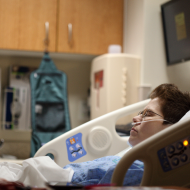Your anaesthesia rotation will be one of the most interesting, demanding and hands on rotations during your medical school experience. This document will provide a few insights, expectations, tips and administrative information for your term.

My expectations
Essentially I want to maximise your learning in the time you are with us. A few ways to get the most out of this rotation include:
- If you are not sure of anything, please ask me!
- When you are performing a task (eg intubation), speak your thoughts out loud. This will allow me to either state your thinking is appropriate or give you advice to how I would approach a situation.
Eg. As you are intubating you might say something like: ‘I am inserting the laryngoscope on the right side to move the tongue away. I can now see the epiglottis, I am placing the tip of the blade into the valeculla, I can’t get a good view of the cords, I think I should use BURP and ask for a bougie…’ - I want you to challenge yourselves and take as much responsibility as possible under my supervision. If you want to manage an airway, ask for it. If you want to do a spinal, ask….
In general, I will allow you to do many procedures supervised as long as you have done the background reading and work Eg. know the setup, method, risks, complications, and watch any video you are able to find on Vimeo or Youtube etc…. - I will teach you as much as you would like, but please write down/record useful information. Please download an app such as Evernote to record all the useful info/methods/techniques/tips so it’s on hand (and so your consultant doesn’t have to repeat themselves) Much of medicine is about access to knowledge! You cannot expect to remember the millions of parcels of knowledge required for effective medical practice – so utilize your smartphones to store, sort and access valuable information.
Apps that are worthwhile to download include
- Drug doses
- Medscape
- Medcalc
- iDAS
- Oxford Handbook of Anaesthesia and
- Oxford Emergencies in anaesthesia
- Evernote (already mentioned)
Prereading
I’ll send you a number of documents to cover
- Anaesthesia Basics (please read this)
- Basic guide to preop assessment (please read this)
- Airway assessment and a few papers (use this as a resource when required)
Please watch these IV cannulation videos before the start of rotation: https://vimeo.com/211832862
https://vimeo.com/212418603
Facebook group
Please sign up to the Abcs of Anaesthesia facebook group. I will post tips and useful information on this page.
Phone numbers, street addresses and codes
Lahiru Amaratunge 0412694739. Lahiru.Amaratunge@wh.org.au
Dept of Anaesthesia 8345 6639
Western Health 8345 6666
Cardiac arrest number from any internal phone is 444
Anaesthetist in charge at Sunshine 83450058 Anaesthetist in charge at Footscray 83456540
Code for Footscrat Department CY1267 Code for Sunshine Hospital Anaesthesia room is 1267
Footscray hospital 160 Gordon street Footscray 3011 Closest train stations are West Footscray and Middle Footscray.
Sunshine Hospital 176 Furlong Rd, St Albans 3021 Closest train station is Ginifer
Williamstown Hospital 77B Railway Crescent, Williamstown, 2016 Closest train station is Williamstown Beach
Sunbury Day Hospital 7 Macedon Street, Sunbury, 3429 Closest train station is Sunbury station.
Theatre
Theatre morning lists generally start at 8am and pm lists start at 1pm. How to arrange your rotation and lists
You can essentially allocate yourselves to any lists at Sunshine, Footscray or Williamstown hospitals with any of our anaesthesia consultants supervising. When I am working at Sunbury hospital, I am happy to supervise you there.
The variety of experiences available include assisting with anaesthesia in the operating theatre or ‘off the floor’ such as in radiology/endoscopy rooms/cath lab, pain rounds, chronic pain clinic, pre admission clinic and cardiopulmonary exercise testing.
You are free to choose to be in essentially any theatre, with any consultant who is happy to have you. That said there are certain theatres that will be most appropriate to getting the most out of this rotation.
Footscray Hospital generally does longer operations in sicker patients. So will not be the best place to get lots of repetitions of airway practice. That said it is a great place to see some large vascular, liver, ortho and thoracic cases with interesting pathophysiology.
Sunshine Hospital generally has more patients per list so great for procedures and practice with airway management. You can also observe obstetrics, gynae and paeds here. The ECT lists are great for airway practice as you will be ventilating up to 13 patients in the list!
Williamstown Hospital also has more patients per list so great for procedures and practice with airway management.
Most consultants will be happy to have you observe and assist, but occasionally it may not be appropriate. Don’t worry, just ask myself or the Anaesthesia consultant in charge and we can easily reallocate you.
How to arrange your rotation and lists
You can essentially allocate yourselves to any lists at Sunshine, Footscray or Williamstown hospitals with any of our anaesthesia consultants supervising. When I am working at Sunbury hospital, I am happy to supervise you there.
The variety of experiences available include assisting with anaesthesia in the operating theatre or ‘off the floor’ such as in radiology/endoscopy rooms/cath lab, pain rounds, chronic pain clinic, pre admission clinic and cardiopulmonary exercise testing.
You are free to choose to be in essentially any theatre, with any consultant who is happy to have you. That said there are certain theatres that will be most appropriate to getting the most out of this rotation.
Footscray Hospital generally does longer operations in sicker patients. So will not be the best place to get lots of repetitions of airway practice. That said it is a great place to see some large vascular, liver, ortho and thoracic cases with interesting pathophysiology.
Sunshine Hospital generally has more patients per list so great for procedures and practice with airway management. You can also observe obstetrics, gynae and paeds here. The ECT lists are great for airway practice as you will be ventilating up to 13 patients in the list!
Williamstown Hospital also has more patients per list so great for procedures and practice with airway management.
Most consultants will be happy to have you observe and assist, but occasionally it may not be appropriate. Don’t worry, just ask myself or the Anaesthesia consultant in charge and we can easily reallocate you.
Some Typical Tasks to Perform Every Day
- Assess patient
- Check bloods and electronic medical record
- Fill in anaesthetic form
- Make a plan
- Draw up medications
- Check machine
Assessing the patient and making a plan will be the daily ritual that much of your learning will arise from. The more assessments you do, the more you will learn about the relevance and implications of disease in anaesthesia. Making an anaesthetic plan (see Anaesthesia Basics pdf) will allow you to make decisions to test your understanding of how to conduct anaesthesia.
Keep a Logbook
Your ability to self audit is an integral part of continuous improvement and accountability. I suggest you keep an excel spreadsheet (which I’ve attached with the prereading) to log cases and important details. At the end of your rotation, you will see how many cases, intubations, LMAs, iv cannulas etc you’ve placed, but you will also be able to see how your success rate improved.
Skills to develop
Anaesthetists are among the most hands on of specialists. We learn to perform a large number of manual tasks often in high demand situations. Use this list as a checklist to cover as many tasks as possible during your rotation. Ask your anaesthetist/registrar/nurse to supervise and teach you the following techniques. The skills in bold are ones you should have performed during your rotation
- Airway
- Bag mask with guedel, 2 hands and jaw thrust
- Insert LMA
- Intubate
- Use CMAC video laryngoscope
- Use BURP
- Use a bougie
- Use Optiflow thrive
- Set up ventilator
- Use mask ventilation for an entire case
- By doing this you’ll develop the experience of mask ventilation in a few days instead of months You will learn the micro-adjustments necessary You will develop the muscle memory required for successful mask ventilation Observe awake fibreoptic intubation
Cardiovascular Insert iv cannulas Once competent attempt large iv cannula Insert Rapid infusion cannula Insert Arterial cannula Set up fluid line Set up fluid line with pump set Set up art line Observe/set up level 1
Medications Draw up induction medications (propofol, muscle relaxant, opioid) Draw up other meds (antibiotics, antiemetics…) Program syringe driver
Anaesthesia Do a low risk anaesthetic induction Sedate a patient with various agents (combinations of propofol/midaz/opioids etc) Observe spinal anaesthesia Observe epidural anaesthesia Learn to attach monitoring ECG, sats probe, BP cuff, BIS, neuromuscular monitor, temp probe
Feel free to add to this list and let me know so I can modify it for the next group
